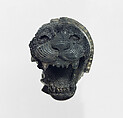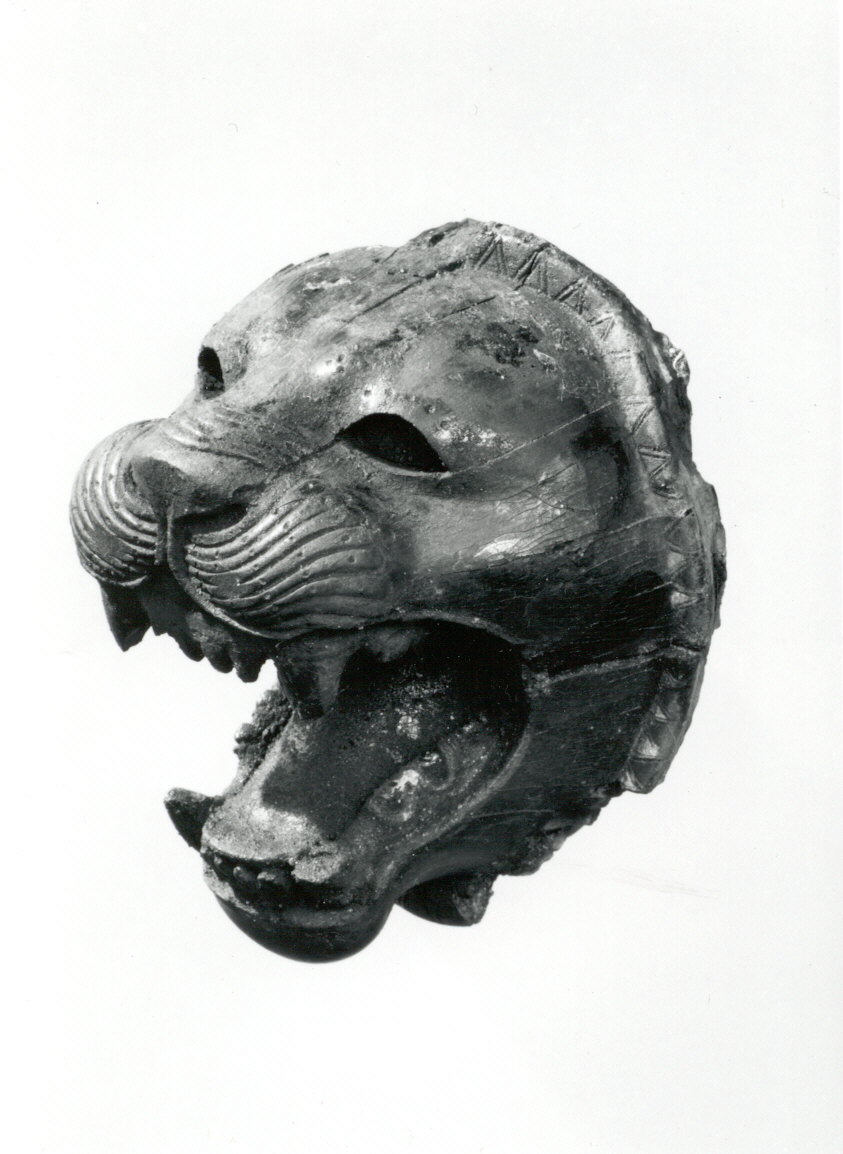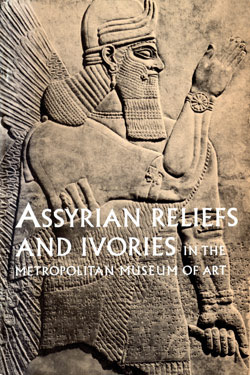Furniture element carved in the round with the head of a roaring lion
Not on view
This fragmentary piece takes the form of the face of a roaring lion. It was found in a storeroom at Fort Shalmaneser, a royal building at Nimrud that was probably used to store booty and tribute collected by the Assyrians while on military campaign. During the final defeat of Assyria at the end of the seventh century B.C., the royal complexes at Nimrud were sacked and burned, and the lion was likely blackened through exposure to fire at this time. The flat back suggests that this piece may have originally been attached to a piece of wooden furniture such as the arm of a chair. The right cheek, eyebrows, and incised muzzle are detailed with incised dots and the eyes are deeply carved for now-lost semiprecious stone or colored glass inlays. A pattern of painted white triangles outlined with raised ribs is preserved on the right side at the back of the face, perhaps to represent a mane. Scenes of the Assyrian king hunting lions are depicted on royal reliefs from the Assyrian palaces. Because it shares the same subject matter, this piece has been attributed to an Assyrian style.
Built by the Assyrian king Ashurnasirpal II, the palaces and storerooms of Nimrud housed thousands of pieces of carved ivory. Most of the ivories served as furniture inlays or small precious objects such as boxes. While some of them were carved in the same style as the large Assyrian reliefs lining the walls of the Northwest Palace, the majority of the ivories display images and styles related to the arts of North Syria and the Phoenician city-states. Phoenician style ivories are distinguished by their use of imagery related to Egyptian art, such as sphinxes and figures wearing pharaonic crowns, and the use of elaborate carving techniques such as openwork and colored glass inlay. North Syrian style ivories tend to depict stockier figures in more dynamic compositions, carved as solid plaques with fewer added decorative elements. However, some pieces do not fit easily into any of these three styles. Most of the ivories were probably collected by the Assyrian kings as tribute from vassal states, and as booty from conquered enemies, while some may have been manufactured in workshops at Nimrud. The ivory tusks that provided the raw material for these objects were almost certainly from African elephants, imported from lands south of Egypt, although elephants did inhabit several river valleys in Syria until they were hunted to extinction by the end of the eighth century B.C.
Due to rights restrictions, this image cannot be enlarged, viewed at full screen, or downloaded.
This artwork is meant to be viewed from right to left. Scroll left to view more.




